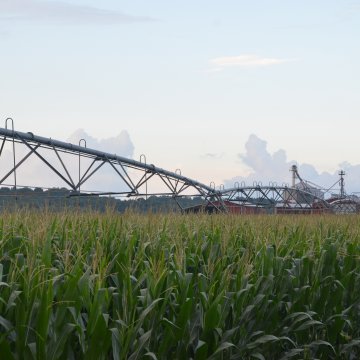Explore our blog featuring articles about farming and irrigation tips and tricks!
An Overview Of Irrigation Techniques & Technology

By: Anna McConnell
In areas where rain doesn’t come regularly or when growing water-hungry crops, farmers are forced to get creative when deciding how to keep fields green and lush. Irrigation uses groundwater, surface water, and water delivered directly to farms to hydrate thirsty plants.
Evapotranspiration and wind are issues farmers face when trying to get water to plants while avoiding waste. General access to water and a diminished supply are also struggls for farmers in many parts of the country.
While operations in western states make up the bulk of U.S. farms that irrigate, farms across the country use irrigation. Just five states – Nebraska, California, Texas, Arkansas, and Idaho – house 52% of the nation’s total irrigation acres.
There are multiple ways to irrigate. Research has backed numerous effective application strategies, but each farmer has their own preference and budget. On this page, you’ll find an overview of irrigation techniques and how irrigation fits into the U.S. agriculture landscape.
DRIP IRRIGATION: WATER TO THE ROOTS
One approach to getting plants the moisture they need is by sending water directly to the roots with a drip irrigation system. While the irrigation method is more expensive – it’s made up of hoses with holes throughout that pump water directly to plant roots within the soil – farmers see a reduction in water applied. Drip irrigation can also be beneficial to oddly shaped or sloped fields.
Stay up to date on all T-L news and get alerts on special pricing!


